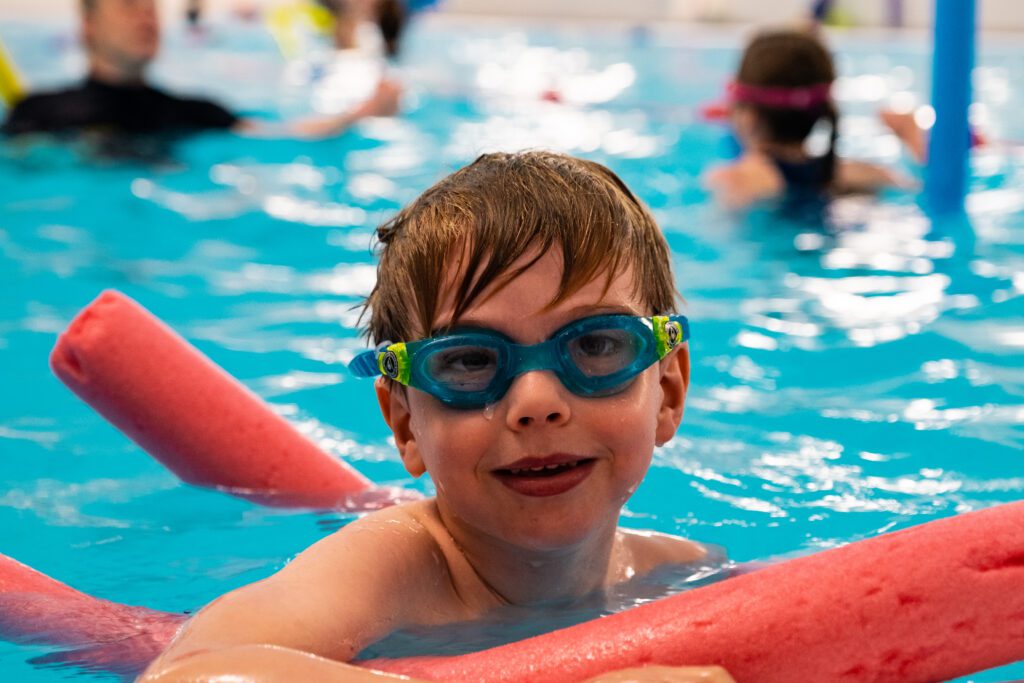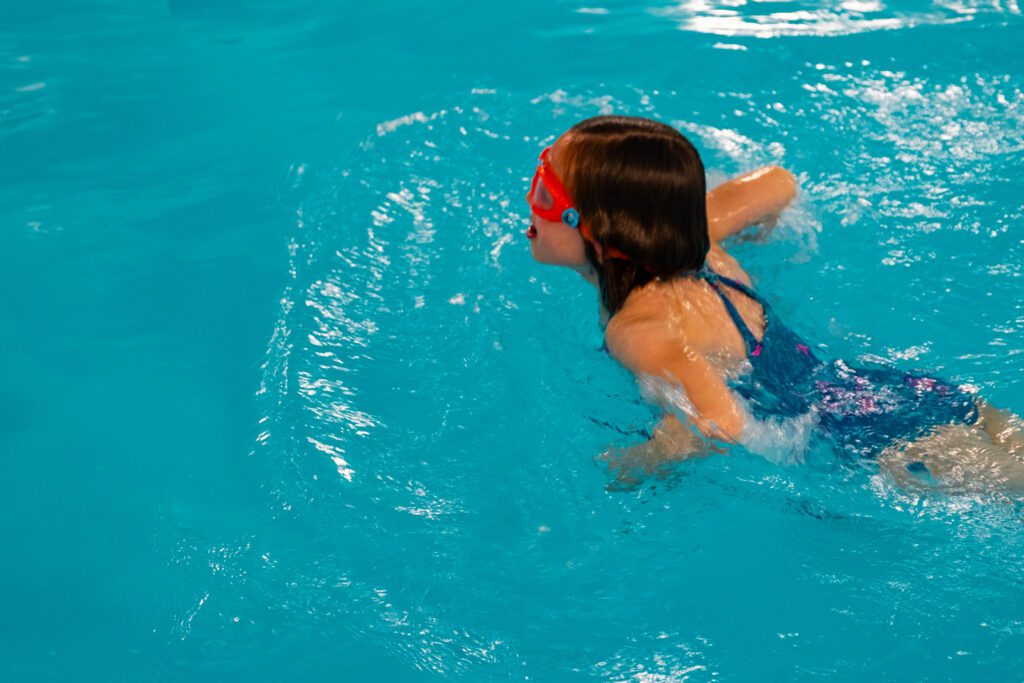We hear this question – or variations of it – often. It’s a tricky one to answer, for a number of reasons. First and foremost, how do you define ‘learn to swim’ – remembering that our definition might be different to yours, and that might be different again to another parent. And secondly, because each child learns differently and at their own pace, which is totally normal.
How do we define ‘learn to swim’?
As we alluded to above, everybody has their own thoughts on what ‘learn to swim’ looks like. For some, it might mean that a child can swim across the swimming pool. For others, it might be that they can swim without any support or aids. Others may say it’s when their child can comfortably swim x metres or demonstrate all four strokes.
None of these definitions are perfect – far from it! If we take the example of ‘learn to swim’ as being able to swim across the swimming pool, for example, we might ask “how big is the pool?” Is the child swimming with aids or support? Moving on, let’s consider the definition that says a child can swim without support or aids… How far can they swim? Are they doing it with the correct technique?
Even within the SwimNE team, our thoughts on what ‘learn to swim’ looks like differ. As a general rule, though, we’d say that child has ‘learned to swim’ once they complete stages 1 to 8 – however there are still opportunities for them to learn in stages 9 and 10 and even beyond. By the time they complete stage 8, though, they can swim for long distances, they can demonstrate all of the strokes with perfect technique, they can perform a range of self-rescue techniques, they know how to do all the relevant turns and floats, and more.

Let’s break it down
OK, so now we can agree to disagree as to what ‘learn to swim’ looks like for the sake of this question, how about we consider instead how long it will take a child to swim, for example, across the pool with no aids. Or how long will it take for a swimmer to master all four strokes.
Here, it’s useful to look at the stages and consider the skills that are learned in each one (you can read more about that here). We can then start to say that by the time they reach stage x – or complete stage y – that they will be able to do this, that and the other.
The next natural question then is… how long will it take my child to pass stage x? So, let’s move on to that!
How long will each stage take to complete?
Again, it’s a tricky question to answer! Each and every child learns at a different pace, and that’s true both in and out of the water. This, of course, is absolutely normal!
Some children – particularly those who are already familiar with the water or who swim regularly with their family – will fly through their first couple of stages, but might plateau when they reach, for example, stage 3 (this isn’t uncommon at certain ages or times). Other children might take a bit longer to complete stage 1, and this might be because they are reluctant to put their face in the water – once they master this, though, many of the other skills will click into place. It’s also important to remember that children will pick up some skills more quickly than others, so you might find that your child is much better at, say, breaststroke than their classmates, but isn’t quite as strong at front crawl – again, all very normal!
The next thing to consider is how progress is being measured. Here at SwimNE, we focus on consistency and technique. Before we can say that a certain skill has been achieved, our instructors need to see it demonstrated with the correct technique – which is really important in a child’s broader learn to swim journey. We also need them to demonstrate the skill consistently. Other swim schools, of course, will differ in their approach to moving children from one stage to the next.
Last but not least, we need to think about how often children are assessed. Some clubs may assess children at the end of each term or half-term. They will then make a call as to whether a child moves on to the next stage, or whether they need to stay in their current group.
At SwimNE, we constantly assess our swimmers. As and when they have correctly and consistently demonstrated all the necessary skills, children will automatically move on to the next stage. Usually, they will stay in the same class and we will start working them towards the next set of achievements.

In summary…
Learning to swim is a journey – and children will continue to build on their aquatic skills over a number of years. It’s incredibly hard to say how long it will take a child to learn to swim, largely due to the fact that we all define ‘learn to swim’ differently. Likewise, we can’t give a one-size-fits-all answer as to how long it will take a child to reach a particular stage in their learn to swim journey. Why? Because every child learns differently – at their own pace.
So, what can we tell you? We can tell you that we constantly assess our swimmers, and keep a really close eye on how they are progressing in their swimming lessons. We have a highly experienced team of swimming instructors, who are supported by lesson coordinators, a dedicated in-house training team, and a group of office-based support staff. If you ever have any questions about your child’s learn to swim journey, or their progress within their lessons, we are always here to help!
It’s also important to remember that, even if they aren’t moving on to the next stage, children are still progressing. They are still learning, and they are still mastering new skills. At times, they may progress quickly through the various learn to swim stages; at other times, progress may feel a little slower. All normal in the wonderful world of children… we promise!